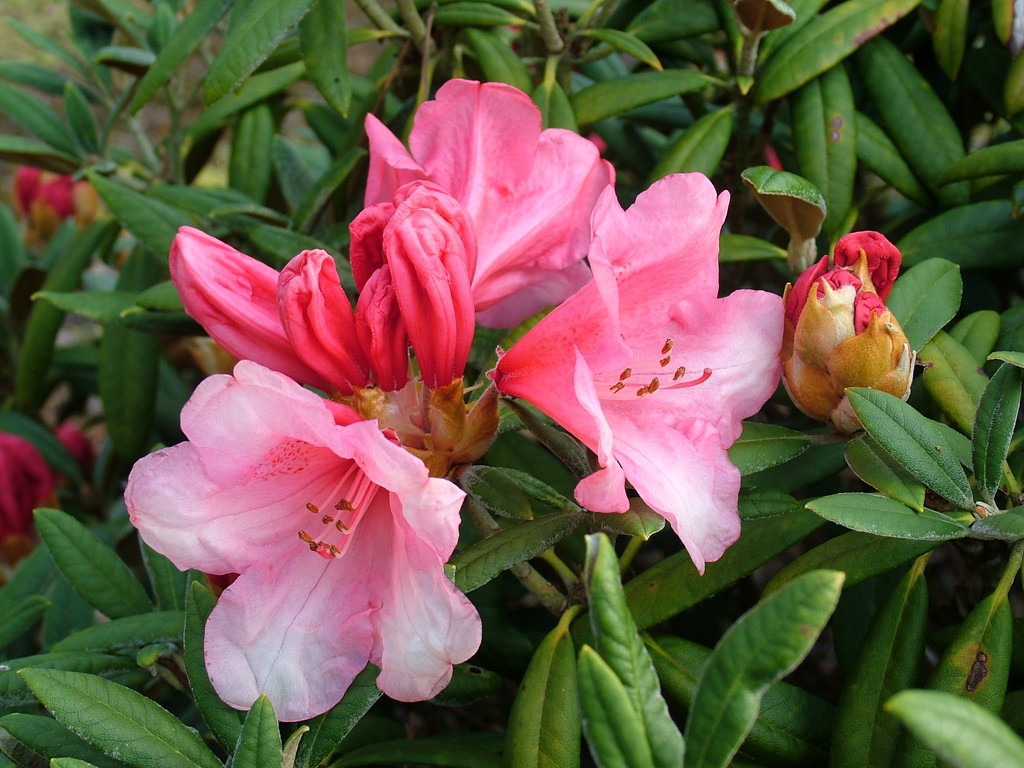Rhododendron 'Cupcake' Thompson
rhododendron 'Cupcake'
A compact, dome-shaped evergreen shrub to 1.2m high, with narrowly ovate, glossy dark green leaves, with a reddish-brown coating beneath that is cinnamon-coloured on young growth. Produces masses of funnel-shaped flowers, deep rose pink fading to pale pink, in early summer
Size
Ultimate height
1–1.5 metresTime to ultimate height
5–10 yearsUltimate spread
1–1.5 metresGrowing conditions
Moisture
Moist but well–drainedpH
AcidColour & scent
| Stem | Flower | Foliage | Fruit | |
| Spring | Green Brown | |||
|---|---|---|---|---|
| Summer | Pink | Green Red | ||
| Autumn | Green Red | |||
| Winter | Green Red |
Position
- Full sun
- Partial shade
Aspect
South–facing or West–facing
Exposure
Sheltered Hardiness
H5Botanical details
- Family
- Ericaceae
- Native to GB / Ireland
- No
- Foliage
- Evergreen
- Habit
- Bushy
- Potentially harmful
- Harmful if eaten. Wear gloves and other protective equipment when handling. Pets (dogs, cats, rabbits, tortoises) Harmful if eaten - for further information and contact numbers regarding pets, see the HTA guide to potentially harmful plants
- Genus
Rhododendron can be evergreen or deciduous shrubs or trees, with simple leaves, sometimes with a dense colourful indumentum of hairs on the lower side, and funnel-shaped, bell-shaped or tubular flowers that may be solitary or in short racemes
- Name status
Accepted
How to grow
Cultivation
Grow in moist but well-drained, leafy, humus-rich acid soil, this cultivar is suitable for full sun as well as light shade. See rhododendron cultivation for more detailed advice
Propagation
Propagate by semi-hardwood cuttings in late summer, by layering in autumn or by grafting in late winter
Suggested planting locations and garden types
- City and courtyard gardens
- Cottage and informal garden
- Patio and container plants
- Low Maintenance
- Flower borders and beds
Pruning
Pruning group 8 (evergreens), after flowering
Pests
May be susceptible to vine weevil, whitefly, rhododendron leafhopper, pieris lacebug, scale insects, caterpillars and aphids
Diseases
May be susceptible to various Rhododendron diseases including powdery mildews, rhododendron petal blight, rhododendron bud blast, silver leaf and honey fungus
Get involved
The RHS is the UK’s gardening charity, helping people and plants to grow - nurturing a healthier, happier world, one person and one plant at a time.
